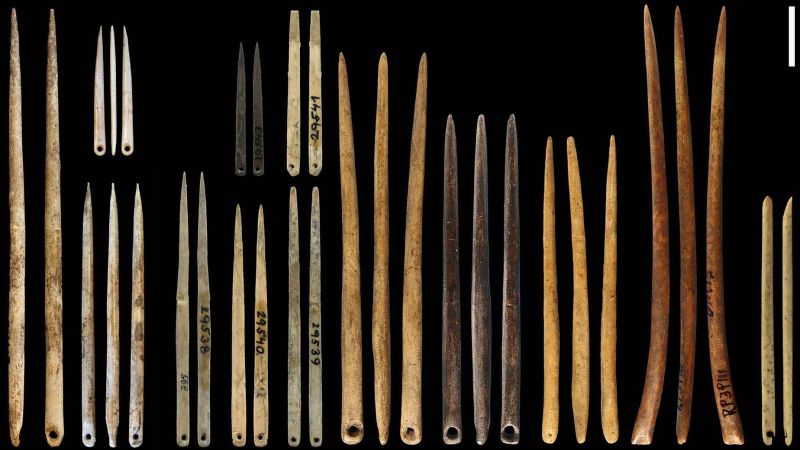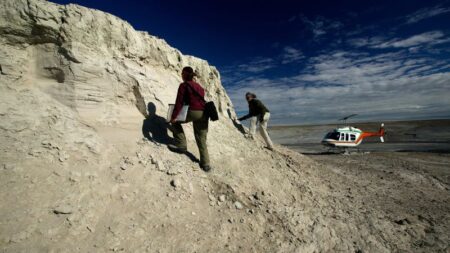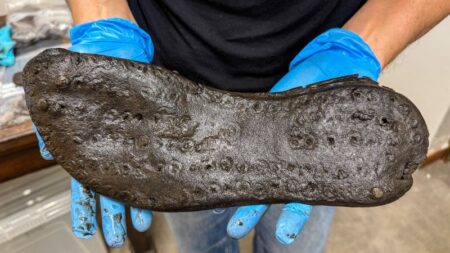Good evening, I’m reporting live with breaking news on a fascinating discovery that might change our understanding of the beginnings of fashion. A new study has found that the eyed needle, a sewing tool made of bones, antlers, or ivory that first appeared around 40,000 years ago in southern Siberia, could hold important clues.
Researchers examined archaeological evidence from various sites across Europe, the Middle East, Southeast Asia, southern Africa, and Australia where ancient tools for making clothes had been found. According to the study published in the journal Science Advances, the emergence of eyed needles raised questions about the evolution of tailoring and self-expression among prehistoric humans.
Lead study author Ian Gilligan from the University of Sydney believes that the use of eyed needles made sewing more efficient and marked the transition to fitted or tailored clothing. The appearance of these tools in colder regions of Eurasia around 40,000 years ago during the last glacial period suggests a shift from traditional methods of body decoration to clothing decoration for social purposes.
Eyed needles were not only used for embellishment but also for creating more form-fitting garments or tailored layers such as underwear. The study also highlighted the discovery of older tools for tailoring, such as bone awls, indicating that other technologies existed before the invention of eyed needles.
While the oldest clothing ever found dates back around 5,000 years, evidence of clothing decoration from 30,000 years ago near Moscow suggests that eyed needles played a role in this cultural and social practice. The study suggests that the purpose of clothing transitioned from thermal insulation to social necessity around 12,000 years ago, marking a significant change in human culture.
This study underscores the importance of clothing in understanding the development of human cultures and brings together art and science in bridging differing perspectives. Scholars like Liza Foley from Ghent University emphasize the significance of artifacts like the eyed needle in humanizing the past and shedding light on our ancestors’ technological and cultural knowledge.
April Nowell, a professor at the University of Victoria, highlights how objects like the eyed needle can provide insights into the decision-making processes of Ice Age peoples when making spun, dyed garments. The study shows that seemingly insignificant objects like a needle open a window into the rich and unexpected lives of our ancient ancestors.
As we continue to unravel the mysteries of the past, discoveries like this remind us of the profound impact of even the simplest tools on human history and culture. Reporting live, this is [Your Name] for CNN News.










